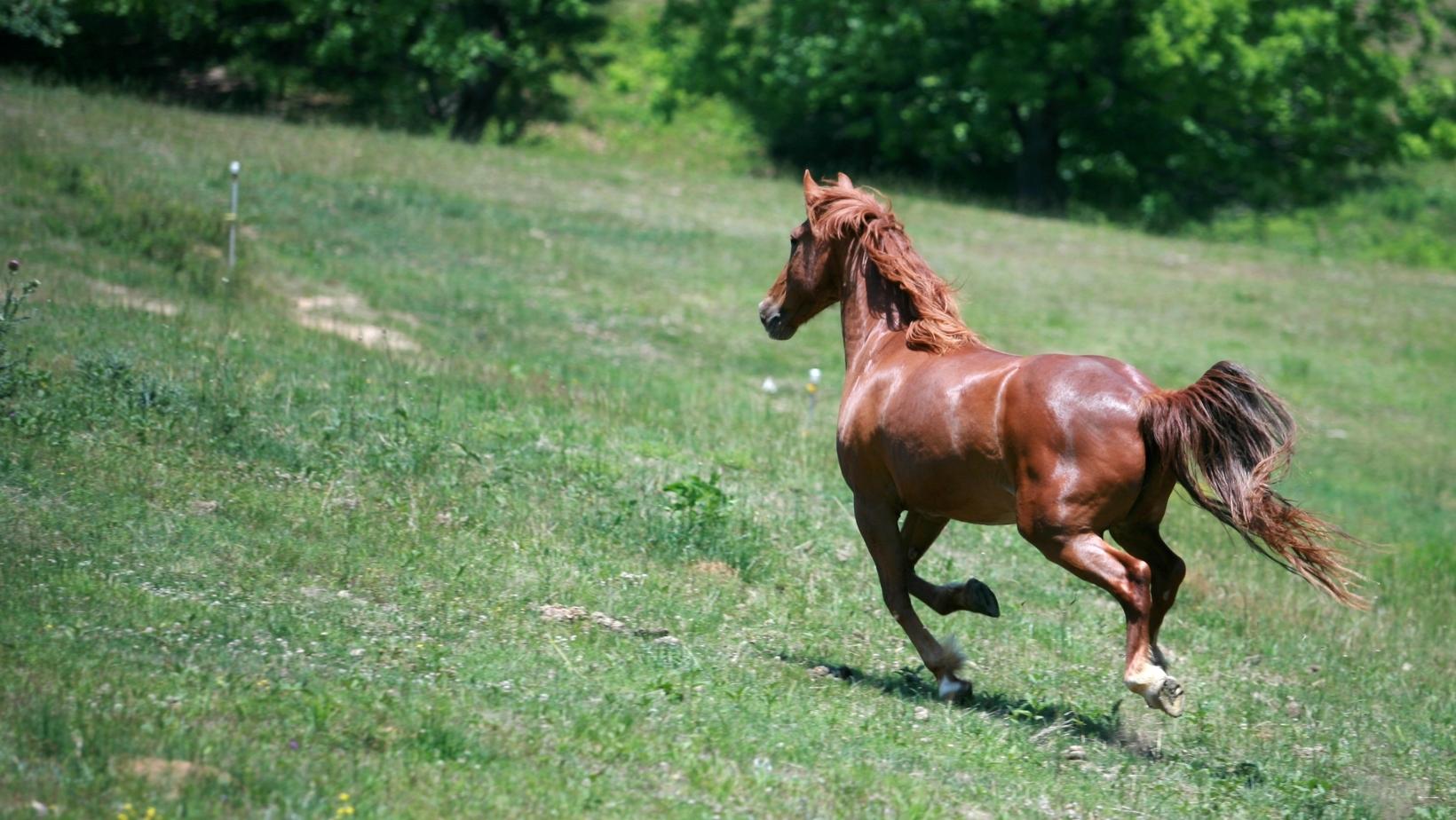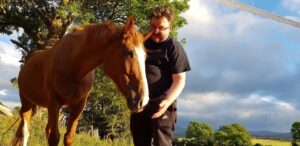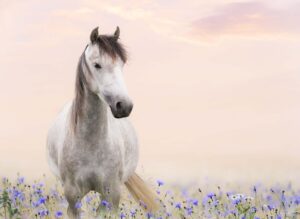One of the first things most of us do every time we arrive at the yard is go to catch our horse. Our horse might be in the field, a smaller paddock, or his stable. We go up to our horse and either halter him or touch him, hug him or rub him. Usually, we do something else after that, too – depending on our plan for the day. The majority of horses are very compliant with this request on our part and stand still as we approach them. Others let us know in varying degrees that they are not so happy with this plan!
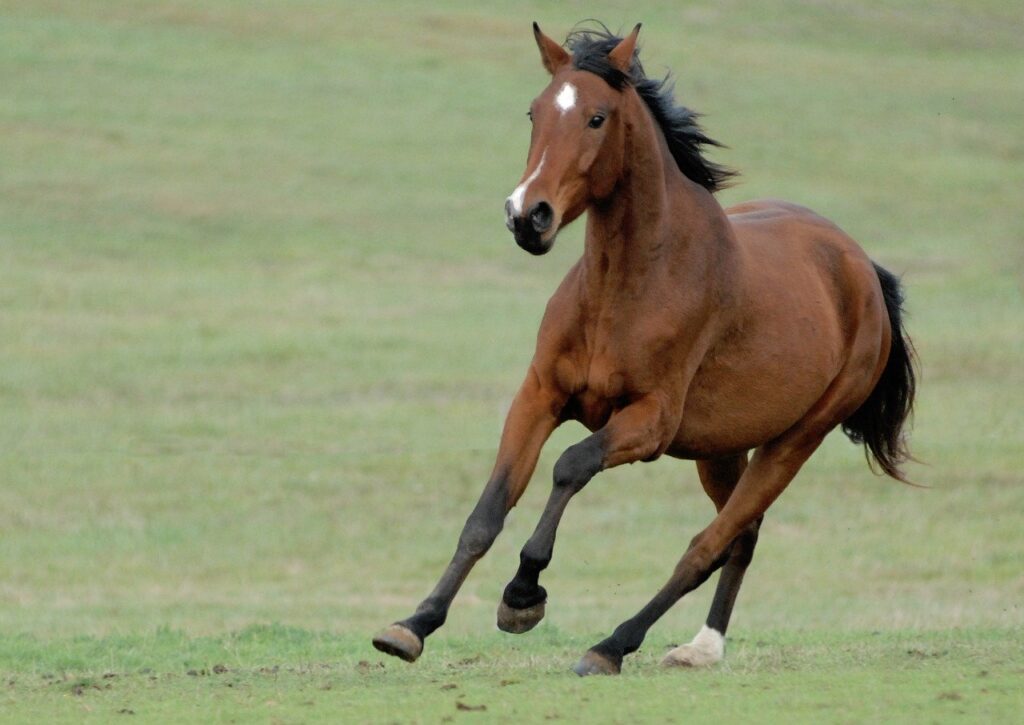
Some “put up” Others “speak up”!
Sometimes the only difference between the first group and the second group of horses mentioned above is that one “puts up” and the other “speaks up”! And yes, a “puts up” horse makes for an easier day…. but is that what we really want? Wouldn’t we rather have a horse that is completely with us, in body and thoughts? A horse that is 100% willing and happy to share our agenda for that day?
“My horse stands still but pins his ears when I approach him with a headcollar”
My student, Ms C, felt that her horse, Mr M, was not ready to have the headcollar on yet. He is a horse with trust issues and still pins his ears when she approaches him with a headcollar. She could “catch” him, but he is one of the “speak up” horses…. and he is very lucky to have Ms C around him to hear him out.
It is very important that we are aware of that “moment” when we enter our horse’s space, that moment when he acknowledges our presence as we approach him. This might be by a flicker of an ear, by looking our way whilst grazing or lifting his head and turning towards us. I explained to Ms C that with horses like Mr M it is even more important to be aware of that “moment” when we enter their space because what makes the difference in their “welcome” is how they feel about what they expect is going to happen next.
What happens after human approaches me?
With horses that don’t really want to be caught, it helps to create a good association in the horse’s mind between “human is walking towards me” and “what happens after human catches me”. Your horse will have a whole bunch of memories of “what happens after human approaches me” (a lot of them perhaps from before they met you!) If they are not good memories, we need to create a new association with good ones.
The first step might look something like this: “Horse acknowledges me. I pause to say thank you and see what he says next”. If what our horse says next is “please go away” by turning away from us (this might be in just his thoughts, his gaze, his nose, his head, or his whole body depending on what he is feeling) or even by threatening us (ears pinned, head tossed or flashing their back end at us), then we need to start a conversation that asks your horse which way we can come in and approach him.
How do we have that conversation with the horse?
So how do we enter into this conversation with our horse? Well, that is exactly what we look at in the Introduction to Softness Training course, that is available at the Equine Academy.
In a nutshell: Make sure you have connected with his thoughts before you “catch” his body.
My invitation to all of us is to go out there and make sure we have “caught” our horse’s thoughts and heart before we catch its body with the rope or headcollar. I know… “real life” gets in the way sometimes…. but if we make sure that we make some of our approaches more mindful (and if possible most of our approaches!), our horses will become calmer, softer, more willing and connected!
If you would like to know more about “catching” your horse’s mind and heart before you catch their bodies, maybe you would like to join one of my Connection Challenges. They run for 10 days several times a year and are a great way to get started with becoming the best thing that happens to your horse every time you visit it!
In the meantime, I wish you many happy horsey hours!
Monica
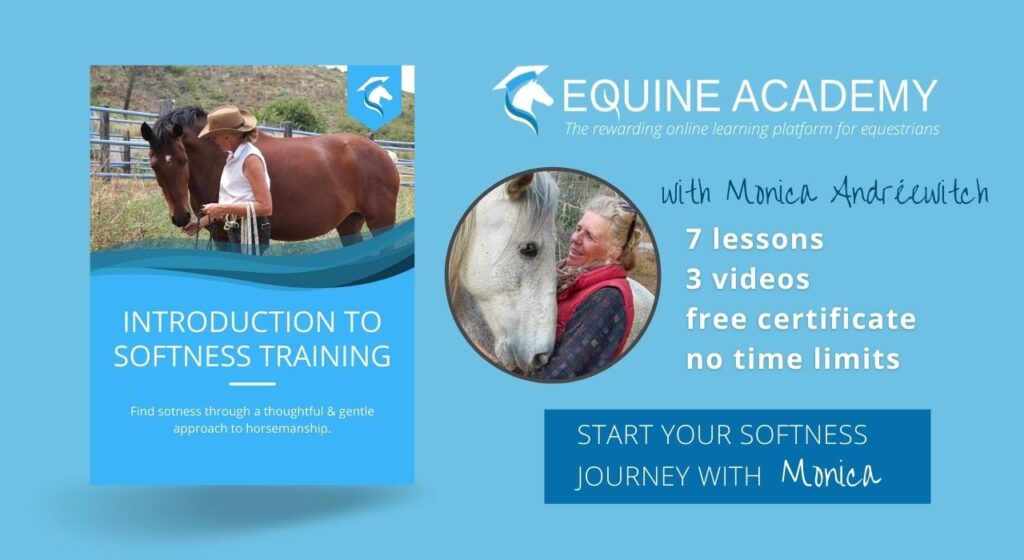
This article first appears in the EA Journal in February 2022 – Get your free copy


